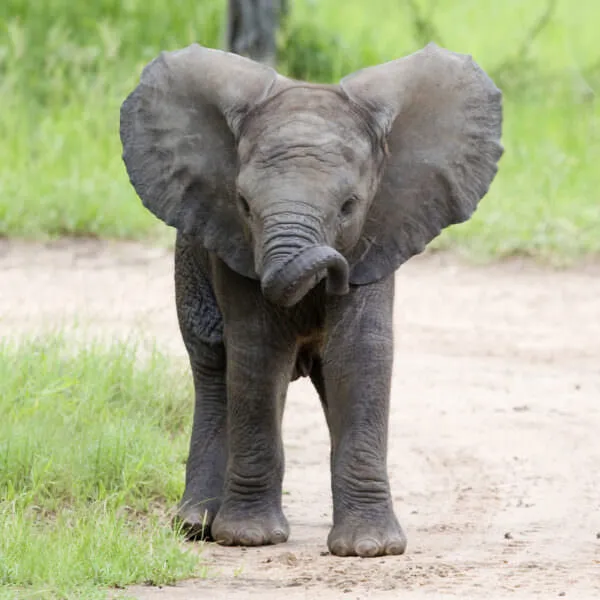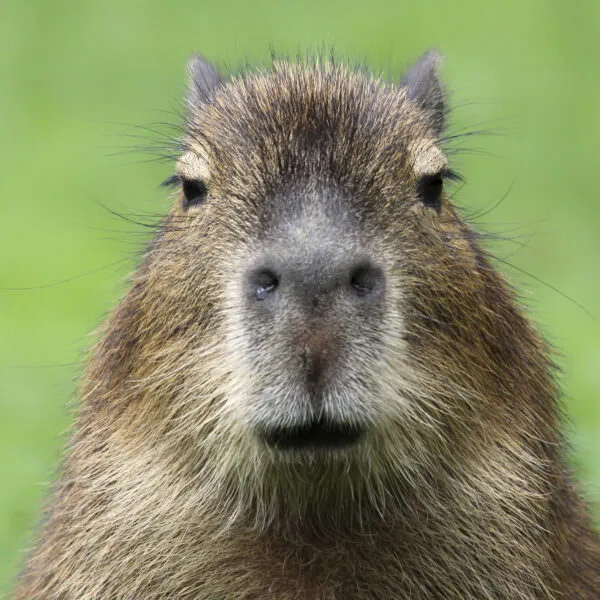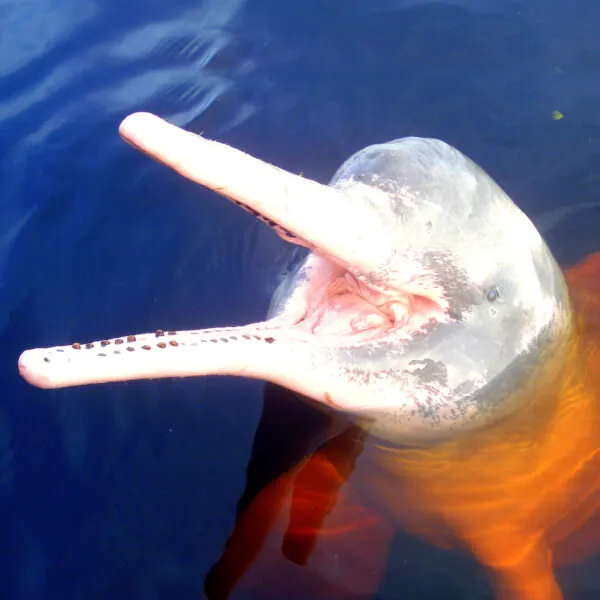Anatomy
Collared peccaries, also called javelinas, look a lot like pigs but they actually belong to a different family of mammals. Their coarse coats are a “salt and pepper” color with a hint of yellow on the cheeks. The white “collar” running around their shoulders and necks gives them their name. Collared peccaries have large, ovular heads and flat snouts. They have sharp, straight tusks that fit tightly together. Their legs seem slender under their proportionally large bodies. Collared peccaries can grow up to 3.3 feet (a meter) long and weigh 66 pounds (30 kg).
A very social species, collared peccaries make a lot of noise— barking, grunting, purring, woofing and coughing—because they have strong hearing but poor vision and thus rely on vocalizations to communicate with each other. These smelly creatures are sometimes called “musk hogs” because of the odor they emit from glands located on their rump and near their eyes. They use this scent to recognize other herd members and to mark their territories. When threatened, they run away and scatter. On rare occasions they will stand together defensively, clack their intimidating teeth and then charge. Even large predators such as coyotes may get scared off!
We're All In
Together, we're building a future where people and nature thrive. Sign up today and join our movement...
Habitat
Collared peccaries are found in the southern United States (Arizona, Texas, and New Mexico) and throughout Central America to northern Argentina. They live in tropical rainforests except in the United States, where they live in desert habitats. Collared peccaries have very close social relationships and live in hierarchical herds of five to 15 members. They cannot withstand extremely cold temperatures so they huddle shoulder to shoulder in caves or similar enclosures to keep warm. Females give birth to one to three young, avoiding the herd for one day afterwards lest another herd member eats their young. Attracted by food handouts, some herds have moved to urban areas.
Diet
Collared peccaries use their sensitive noses to root out food from underground, including tubers, bulbs, nuts and fruits. Their complex stomachs enable them to eat poorly chewed food that is rich in cellulose. Although they are mainly herbivorous, some people believe they also consume insects, snakes and other animals. In the desert, collared peccaries eat mostly agave and prickly pear cacti, which have high water content.
Threats
For centuries, collared peccaries were an important meat source to people in Central and South America. In the southwestern United States, they are hunted for sport. Wild felines are their main natural predators. However, those activities have a minor impact on collared peccary populations compared to habitat loss to farms, pastures and human developments. Frustrated farmers organize collared peccary extermination programs to protect their crops. In the past, commercial sale of their hide and meat in global markets reduced their populations significantly.
Sources
- Gilbert, Bil. August 1999. Do Not Take the Javelina Lightly. Smithsonian v30 i5 p52.
- University of Michigan Museum of Zoology
- “Collared Peccary a.k.a. javelina,” The Living Desert Zoo & Gardens website, 2004
- “Collared Peccary,” Smithsonian National Zoological Park website, 2007



